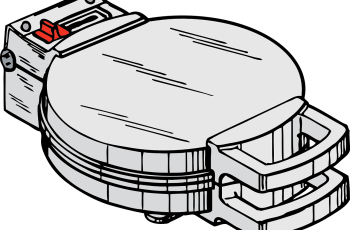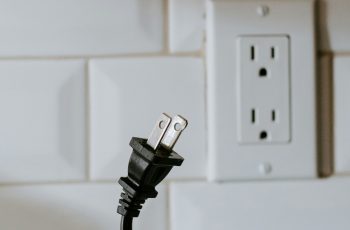Ad Blocker Detected
Our website is made possible by displaying online advertisements to our visitors. Please consider supporting us by disabling your ad blocker.
A sparkling clean and well-maintained electric pressure cooker can not only increase its lifespan but also ensure that your meals are cooked efficiently and safely. In this article, you will discover a range of handy tips and tricks that will help you keep your electric pressure cooker in pristine condition. From essential cleaning techniques to smart maintenance practices, you will soon become an expert in ensuring your pressure cooker stays in top-notch shape. Say goodbye to stubborn stains and grime, and get ready to enjoy hassle-free cooking with these electric pressure cooker cleaning and maintenance tips.
Cleaning the exterior of the electric pressure cooker
Wiping down the exterior with a damp cloth
To keep your electric pressure cooker looking clean and shiny, it’s important to regularly wipe down the exterior with a damp cloth. This will remove any surface dirt or smudges that may have accumulated during use. Simply dampen a soft cloth with water and gently wipe the exterior surfaces of the cooker. Make sure to pay attention to any crevices or hard-to-reach areas. This quick and easy step will help maintain the overall appearance of your cooker.
Using mild soap and water for stubborn stains
If you come across stubborn stains or spills on the exterior of your electric pressure cooker, a mild soap and water solution can help tackle the problem. Mix a small amount of mild dish soap with warm water and use a soft cloth to gently scrub the stained area. Be careful not to use any abrasive cleaners or scrubbers, as they can potentially scratch the surface of your cooker. Rinse the cloth thoroughly and wipe away any soapy residue from the exterior. This gentle cleaning method will help remove tough stains without causing any damage.
Avoiding abrasive cleaners or scrubbers
When it comes to cleaning the exterior of your electric pressure cooker, it’s important to avoid using abrasive cleaners or scrubbers. These harsh cleaning agents and tools can scratch the surface of your cooker and potentially damage the finish. Instead, opt for a soft cloth or sponge and a mild soap and water solution. This will effectively clean the exterior without causing any harm. By avoiding abrasive cleaners and scrubbers, you’ll ensure that your cooker remains in pristine condition for years to come.
Cleaning the lid and control panel separately
While cleaning the exterior of your electric pressure cooker, it’s important to pay special attention to the lid and control panel. These two components require separate cleaning methods to ensure their proper functioning. For the lid, wipe it down with a damp cloth to remove any dirt or stains. If necessary, you can also use a mild soap and water solution to clean the lid. Just make sure to rinse it thoroughly to remove any soapy residue. For the control panel, use a slightly damp cloth to wipe away any smudges or spills. Avoid getting the control panel excessively wet, as this can cause damage. Taking the time to clean the lid and control panel separately will help maintain the overall cleanliness and functionality of your electric pressure cooker.
Cleaning the cooking pot and accessories
Removing any food debris from the pot
After each use of your electric pressure cooker, it’s important to remove any food debris from the cooking pot. This will prevent the accumulation of residue and make the cleaning process much easier. Start by emptying any remaining food from the pot and rinsing it under warm water. Use a soft brush or sponge to gently scrub away any stuck-on food particles. Be sure to pay attention to the bottom and sides of the pot, where food residue is most likely to accumulate. Once all the debris has been removed, rinse the pot thoroughly to remove any remaining residue.
Soaking the pot in warm soapy water
To ensure a thorough cleaning of your electric pressure cooker’s cooking pot, it’s recommended to soak it in warm soapy water. Fill your sink or a large basin with warm water and add a small amount of mild dish soap. Place the cooking pot in the soapy water and let it soak for around 15 minutes. This will help to loosen any stubborn food particles and make them easier to remove. After soaking, use a soft brush or sponge to scrub the pot gently, paying attention to any stains or residue. Rinse the pot thoroughly with warm water to remove any soapy residue before drying.
Using a soft brush or sponge for stubborn stains
For stubborn stains or residue that doesn’t come off easily, the use of a soft brush or sponge can be helpful. Make sure to choose a brush or sponge with soft bristles to avoid scratching or damaging the cooking pot. Apply a small amount of mild dish soap or a baking soda paste to the brush or sponge and gently scrub the stained areas. If necessary, let the soapy solution sit on the stains for a few minutes to help loosen them. Rinse the pot thoroughly with warm water to remove any residue before drying.
Cleaning the sealing ring separately
The sealing ring of your electric pressure cooker plays a crucial role in ensuring a tight seal during cooking. To keep the sealing ring clean and in good condition, it’s important to clean it separately from the cooking pot. Remove the sealing ring from the lid of your cooker and wash it with warm soapy water. Use a soft brush or sponge to gently scrub away any residue or stains that may have accumulated. Rinse the sealing ring thoroughly with warm water to remove any soapy residue before drying. Make sure the sealing ring is completely dry before reattaching it to the lid.
Washing the accessories (e.g., steam rack, trivet) by hand
In addition to the cooking pot, electric pressure cookers often come with various accessories such as a steam rack or trivet. These accessories should also be regularly cleaned to maintain their cleanliness and functionality. Washing these accessories by hand is the best way to ensure a thorough cleaning. Use warm soapy water and a soft brush or sponge to wash the accessories. Pay attention to any food residue or stains and make sure to scrub them gently. Rinse the accessories thoroughly with warm water to remove any soapy residue before drying.

Descaling the electric pressure cooker
Checking the manufacturer’s instructions for descaling
Descaling your electric pressure cooker is an important maintenance task that helps remove mineral buildup and keeps your cooker in optimal condition. Before starting the descaling process, it’s essential to check the manufacturer’s instructions for specific guidelines and recommendations. Different models may have different procedures or requirements for descaling. The manufacturer’s instructions will provide you with the necessary information to ensure a safe and effective descaling process.
Mixing equal parts of water and white vinegar
One common method for descaling an electric pressure cooker is by using a mixture of equal parts water and white vinegar. The acidity of the vinegar helps dissolve mineral buildup and remove any scale that may have formed. In a measuring cup or bowl, mix equal parts water and white vinegar. The amount of the mixture will vary depending on the size of your cooker, so refer to your manufacturer’s instructions for guidance. Mixing the water and vinegar solution is a crucial step in preparing for the descaling process.
Pouring the mixture into the cooker and closing the lid
Once you have prepared the water and vinegar mixture, it’s time to pour it into your electric pressure cooker. Open the lid and carefully pour the mixture into the cooking pot. Make sure not to exceed the recommended maximum fill line indicated on the pot. Once the mixture is inside the cooker, close the lid securely. Ensure that the lid is properly sealed to prevent any leakage during the descaling process. This step is essential for allowing the descaling mixture to work effectively.
Running a descaling cycle or manual pressure cook
After you have poured the water and vinegar mixture into the cooker and closed the lid, it’s time to initiate the descaling process. Some electric pressure cookers have a dedicated descaling cycle that can be selected from the control panel. If your cooker has this feature, simply choose the descaling cycle and follow the on-screen instructions. If your cooker does not have a descaling cycle, you can manually initiate a pressure cook cycle using the water and vinegar mixture. Refer to your manufacturer’s instructions for specific guidance on how to do this with your cooker.
Discarding the liquid and rinsing the cooker thoroughly
Once the descaling cycle or manual pressure cook cycle is complete with the water and vinegar mixture, it’s important to discard the liquid and rinse the cooker thoroughly. Open the lid and carefully pour the liquid down the sink. Avoid splashing the mixture onto yourself or surrounding surfaces, as vinegar can have a strong odor. Once the liquid has been discarded, rinse the cooking pot and any other removable parts thoroughly with warm water. Make sure to remove any residue or scale that may have been loosened during the descaling process.
Cleaning the steam release valve
Ensuring the cooker is unplugged and cooled down
Before cleaning the steam release valve of your electric pressure cooker, always ensure that the cooker is unplugged and completely cooled down. This is crucial for your safety and to avoid any potential burns or accidents. Unplugging the cooker and allowing it to cool down will prevent any steam or pressure from being released during the cleaning process.
Removing any debris from the steam release valve
To clean the steam release valve, start by inspecting it for any visible debris or food particles. Use a small brush, such as a toothbrush or a bottle brush, to gently remove any debris from the valve. Be careful not to apply too much pressure or force, as this can potentially damage the valve. Take your time to ensure that the steam release valve is free from any obstructions or buildup.
Using a small brush to clean the valve thoroughly
After removing any visible debris from the steam release valve, use a small brush to clean it thoroughly. Dip the brush in warm soapy water and gently scrub the valve, paying attention to any nooks or crannies. Ensure that the brush bristles reach all areas of the valve to ensure a thorough cleaning. Rinse the valve with warm water to remove any soapy residue before drying.
Checking for any cracks or damages
While cleaning the steam release valve, take the opportunity to check for any cracks or damages. Inspect the valve carefully and ensure that it is not bent or broken in any way. Cracks or damages can affect the functionality of the valve and should be addressed promptly. If you notice any issues with the steam release valve, it may need to be replaced. Refer to your manufacturer’s instructions for guidance on obtaining a replacement valve.
Replacing the valve if necessary
If you discover any cracks, damages, or malfunctions with the steam release valve, it is important to replace it promptly. A faulty valve can compromise the safety and efficiency of your electric pressure cooker, so it’s crucial to address any issues immediately. Refer to your manufacturer’s instructions for information on obtaining a replacement valve or contact their customer support for assistance. Remember to always use genuine replacement parts to ensure the proper functioning of your cooker.

Maintaining the silicone sealing ring
Inspecting the sealing ring for signs of wear or damage
To ensure the proper sealing and safety of your electric pressure cooker, it’s important to regularly inspect the silicone sealing ring for any signs of wear or damage. Over time, the sealing ring can become worn out or develop cracks, which can affect its performance. Before and after each use, take a close look at the sealing ring and check for any signs of wear, tear, or damage. If you notice any issues, it may be time to replace the sealing ring.
Removing the sealing ring for cleaning
To properly clean the silicone sealing ring of your electric pressure cooker, it’s best to remove it from the lid. Carefully detach the sealing ring from its groove by gently pulling it away from the lid. Take your time to avoid damaging the ring or the lid. Once the sealing ring is removed, you can proceed with cleaning it thoroughly to remove any residue or buildup.
Washing the ring with warm soapy water
After removing the sealing ring from the lid, wash it with warm soapy water to ensure a thorough cleaning. Use a soft brush or sponge to gently scrub the ring, paying attention to any stains or residue. Take care to clean both the inside and outside of the ring, as residue can accumulate on both surfaces. Ensure that you rinse the ring thoroughly with warm water to remove any soapy residue before drying.
Rinsing and drying the ring thoroughly
After washing the sealing ring, it’s important to rinse it thoroughly with warm water to remove any remaining soap residue. Make sure to rinse both the inside and outside of the ring to ensure complete cleanliness. Once rinsed, gently pat the ring dry with a clean towel or allow it to air dry completely before reattaching it to the lid. Ensuring the sealing ring is completely dry is important to prevent the growth of mold or mildew.
Reinstalling the sealing ring properly
After the silicone sealing ring has been cleaned and dried, it’s time to reinstall it properly on the lid of your electric pressure cooker. Take care to align the ring with the groove on the lid and press it firmly to ensure a secure fit. Make sure that the ring is evenly seated in the groove and that there are no gaps or areas where it is not properly aligned. Properly reinstalling the sealing ring will help maintain the cooker’s seal and ensure its safe and efficient operation.
Cleaning the float valve and anti-block shield
Removing the float valve and anti-block shield
To clean the float valve and anti-block shield of your electric pressure cooker, start by removing them from the lid. The float valve is a small metal or plastic piece that helps regulate the pressure inside the cooker. The anti-block shield is a removable cover that serves to protect the float valve from debris or blockage. Carefully detach both the float valve and anti-block shield from the lid, taking care not to damage them in the process.
Washing them with warm soapy water
Once the float valve and anti-block shield are detached from the lid, wash them with warm soapy water. Use a soft brush or sponge to gently scrub both components, paying attention to any debris or residue that may have accumulated. Make sure to clean all sides and surfaces of the float valve and anti-block shield. The warm soapy water will help remove any buildup and ensure their proper functioning.
Removing any food residue or debris
While washing the float valve and anti-block shield, make sure to remove any food residue or debris that may be stuck to them. Inspect both components closely and use a soft brush or sponge to scrub away any stubborn stains or particles. Ensuring that the float valve and anti-block shield are free from any obstructions will help maintain the proper functioning of your electric pressure cooker.
Rinsing and drying the parts before reassembly
After washing the float valve and anti-block shield, rinse them thoroughly with warm water to remove any soapy residue. This step is crucial to prevent any residue from contaminating your food during the cooking process. Once rinsed, carefully dry both components with a clean towel or allow them to air dry completely. Ensuring that the float valve and anti-block shield are completely dry before reassembly will prevent the growth of mold or mildew.
Ensuring the float valve moves freely
Before reattaching the float valve and anti-block shield to the lid of your electric pressure cooker, ensure that the float valve moves freely. Gently press on the float valve and observe its movement. It should move up and down smoothly without any resistance. If you notice any stiffness or difficulty in the movement, further cleaning or lubrication may be necessary. A properly functioning float valve is essential for the safe and efficient operation of your cooker.

Maintaining the pressure release handle
Checking the pressure release handle for smooth operation
The pressure release handle of your electric pressure cooker is a critical component for safely releasing built-up pressure. Regularly checking the handle for smooth operation is essential to ensure its proper functioning. Before and after each use of your cooker, test the pressure release handle by moving it up and down. It should move smoothly and without any resistance. If you notice any stiffness or difficulty in the movement, further maintenance may be required.
Cleaning any food particles or debris
If you find any food particles or debris stuck on the pressure release handle, it’s important to clean them. Use a soft brush or cloth to gently remove any visible residue. Take care not to apply excessive force, as this can potentially damage the handle. Make sure to thoroughly clean the handle, paying attention to any crevices or hard-to-reach areas where residue may accumulate. A clean pressure release handle ensures smooth operation and prevents any potential clogs or malfunctions.
Using a food-safe lubricant if necessary
If you encounter any persistent stiffness or difficulty in the movement of the pressure release handle, applying a food-safe lubricant can help. Consult your manufacturer’s instructions to ensure that the lubricant you choose is safe to use with your specific cooker. Apply a small amount of the lubricant to the handle and work it in by moving the handle up and down. The lubricant will help reduce friction and ensure that the handle moves smoothly.
Ensuring the handle locks into position properly
Proper locking of the pressure release handle is crucial for the safe operation of your electric pressure cooker. After cleaning and lubricating (if necessary) the handle, ensure that it locks into position properly. When the cooker is pressurized, the handle should lock in an upright position, preventing the lid from being opened. Test the handle by pressing it down and verifying that it locks securely. Reliable locking of the handle provides the necessary safety measures when cooking under pressure.
Referring to the user manual for specific instructions
For detailed guidance on maintaining the pressure release handle of your specific electric pressure cooker model, always refer to the user manual provided by the manufacturer. The user manual will provide you with specific instructions tailored to your cooker, ensuring that you properly maintain and care for this important component. Following the guidelines outlined in the user manual will help you maintain the functionality and safety of your cooker.
Storing the electric pressure cooker
Cleaning the cooker thoroughly before storing
Before storing your electric pressure cooker, it’s important to give it a thorough cleaning. Clean both the interior and exterior of the cooker to remove any food particles, stains, or residue that may have accumulated during use. Follow the cleaning steps outlined earlier to ensure a comprehensive cleaning before storage.
Allowing all components to dry completely
To prevent the growth of mold or mildew, it’s crucial to ensure that all components of your electric pressure cooker are completely dry before storing. After cleaning the cooker, allow all parts, including the cooking pot, lid, and accessories, to air dry or use a clean towel to dry them thoroughly. Pay special attention to any seals, gaskets, or rubber parts to ensure they are dry. Storing a damp or wet cooker can lead to unpleasant odors or damage.
Storing the cooker in a cool, dry place
Choosing the right storage location for your electric pressure cooker is important for its longevity and performance. Find a cool, dry place in your kitchen or pantry, away from direct sunlight or heat sources. Exposure to sunlight or heat can damage the cooker’s components and compromise its functionality. Make sure the storage location is clean and free from any dust or debris that can accumulate over time.
Avoiding stacking heavy items on top of the cooker
To protect your electric pressure cooker from potential damage, avoid stacking heavy or bulky items on top of it during storage. Excessive weight or pressure can cause the cooker to become misshapen or lead to damage to its components. Instead, store your cooker in a dedicated space where it can sit securely on its own. This will help maintain its shape and integrity for future use.
Keeping the cooker away from direct sunlight or heat sources
Direct sunlight and heat sources can have a detrimental effect on the performance and lifespan of your electric pressure cooker. When choosing a storage location, ensure that it is away from windows, stovetops, ovens, or any other heat-emitting appliances. Prolonged exposure to sunlight or heat can cause the cooker’s components to deteriorate or warp. By keeping your cooker away from direct sunlight or heat sources, you’ll ensure its durability and proper functioning over time.
Regular maintenance checks
Inspecting the power cord for any damages
Regularly inspecting the power cord of your electric pressure cooker is an important maintenance check. Before each use, carefully examine the power cord for any signs of wear, fraying, or damage. If you notice any issues with the power cord, do not use the cooker and contact a professional for assistance. Using a damaged power cord can pose a safety hazard and should be addressed quickly.
Checking the control panel for proper functioning
The control panel of your electric pressure cooker is a vital component that allows you to operate and adjust various settings. Regularly checking the control panel for proper functioning is crucial for a smooth cooking experience. Test each button or control to ensure that it responds correctly. If you notice any issues, such as unresponsive buttons or inaccurate displays, consult the user manual or contact the manufacturer for assistance.
Testing safety mechanisms (e.g., lid locking)
The safety mechanisms of your electric pressure cooker are designed to keep you safe during the cooking process. Regularly testing these mechanisms is important to ensure that they are functioning correctly. Run a test cycle without any food or pressure to check if the safety mechanisms engage properly. This includes testing the lid locking mechanism to ensure that it locks securely when pressurized. If you encounter any issues, refer to the user manual or contact the manufacturer for guidance.
Monitoring the pressure release valve
The pressure release valve is a critical safety feature of your electric pressure cooker. Monitoring the pressure release valve regularly is important to ensure its proper operation and prevent any potential malfunctions. Check the valve for any signs of damage or blockage, and ensure that it moves freely. It’s also a good practice to test the valve by running a test cycle without any food or pressure. If you notice any issues with the pressure release valve, refer to the user manual or contact the manufacturer for assistance.
Ensuring the rubber gasket is in good condition
The rubber gasket, also known as the sealing ring, is responsible for maintaining a tight seal during cooking. Regularly inspecting the rubber gasket for signs of wear or damage is crucial for the proper functioning of your electric pressure cooker. Look for any cracks, tears, or deformities in the gasket and ensure that it fits securely in its groove. If you notice any issues with the rubber gasket, it may need to be replaced. Refer to the user manual or contact the manufacturer for guidance on obtaining a replacement gasket.
General tips for electric pressure cooker maintenance
Always unplug the cooker before cleaning
Before starting any cleaning or maintenance tasks, it’s essential to unplug your electric pressure cooker from the power source. This step ensures your safety and prevents any potential accidents. Avoid any contact with water or other liquids while the cooker is still plugged in. Always prioritize safety and remember to disconnect the power cord before cleaning or maintaining your cooker.
Avoid immersing the cooker in water
While cleaning the various components of your electric pressure cooker, it’s important to avoid immersing the entire cooker in water. Electric pressure cookers are designed with electrical components that can be damaged by water. Instead, focus on cleaning the individual parts separately, following the guidelines provided in this article. Avoiding water contact with the cooker’s electrical components will help prevent any potential damage.
Use mild cleaning agents and non-abrasive tools
When cleaning your electric pressure cooker, always use mild cleaning agents and non-abrasive tools. Harsh chemicals or abrasive cleaners can damage the cooker’s surfaces or components. Stick to mild dish soap, warm water, and soft brushes or sponges. These gentle cleaning agents and tools will effectively remove dirt, stains, and residue without causing any harm to your cooker.
Follow the manufacturer’s instructions
To ensure proper maintenance and care for your electric pressure cooker, always follow the manufacturer’s instructions. Different models may have specific guidelines or recommendations for cleaning and maintenance. Referring to the user manual provided by the manufacturer will provide you with accurate instructions tailored to your specific cooker. Following these guidelines will help preserve the longevity and functionality of your electric pressure cooker.
Regularly check for signs of wear or damage
Regularly checking your electric pressure cooker for signs of wear or damage is an essential part of maintenance. Inspect the cooker’s components before and after each use to identify any issues that may require attention. Look for signs of wear, tear, cracks, or deformities. Identifying and addressing these issues promptly will help prevent any potential safety hazards or performance problems.
In conclusion, cleaning and maintaining your electric pressure cooker is crucial for its longevity, efficiency, and safety. By following the tips and guidelines outlined in this article, you can ensure that your cooker remains in optimal condition for years to come. Regularly clean the exterior, cooking pot, and accessories, descale the cooker as needed, and maintain the various components such as the sealing ring, steam release valve, and pressure release handle. Store the cooker properly, conduct regular maintenance checks, and always refer to the manufacturer’s instructions. By incorporating these cleaning and maintenance practices into your routine, you can enjoy the benefits of your electric pressure cooker for many delicious meals to come.

